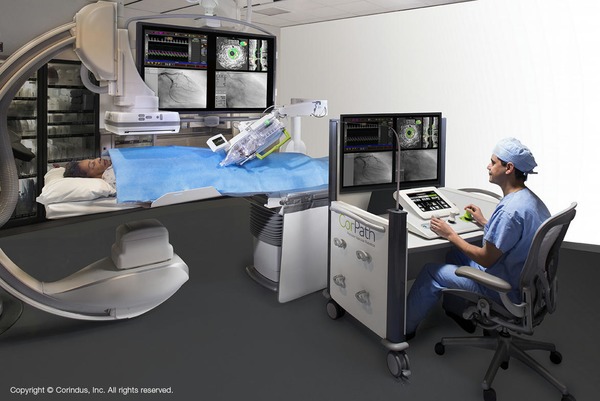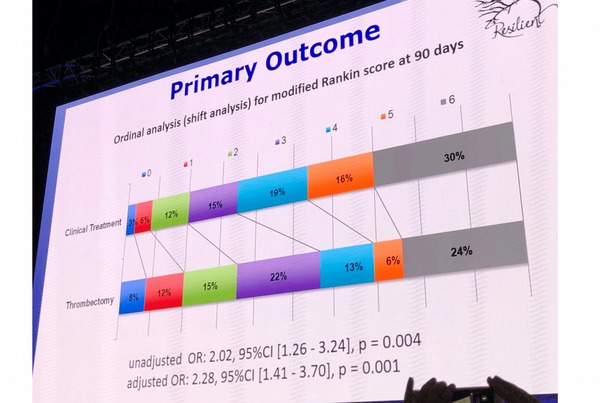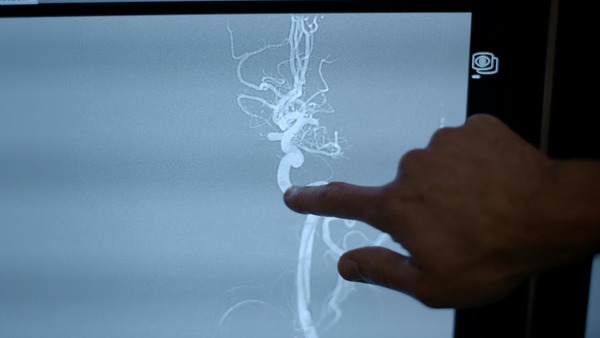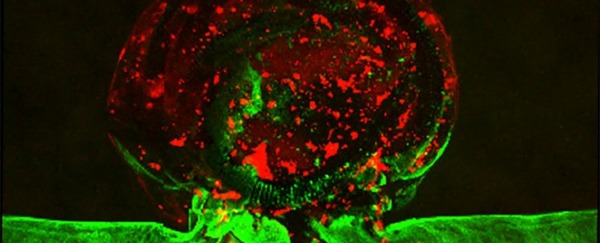 Your new post is loading...

|
Scooped by
Beeyond
December 19, 2020 11:59 AM
|
Also known as cerebral cavernous malformations, these lesions which contain slow moving or stagnant blood, can often cause hemorrhagic strokes, seizures, or headaches. Current treatment involves surgical removal of lesions when it is safe to do so. Previous studies in mice and a small number of patients suggested a link between CA and gut bacteria. This study is the first to examine the role the gut microbiome may play in a larger population of CA patients.

|
Scooped by
Beeyond
December 19, 2020 11:56 AM
|
Stroke is a complex medical issue. But there are ways to significantly reduce its impact. Recognizing the signs of stroke early, treating it as a medical emergency with admission to a specialized stroke unit, and access to the best professional care can substantially improve outcomes.

|
Scooped by
Beeyond
December 14, 2020 6:21 AM
|
No difference in mortality between patients treated with Philips' Stellarex drug-coated balloon and those treated with percutaneous angioplasty.

|
Scooped by
Beeyond
December 4, 2020 4:11 AM
|
MIST led to significantly faster initial door-to-recanalization times compared with DS, which was comparable to mothership. This decrease in time has translated into improved short-term outcomes and a trend towards improved long-term outcomes.

|
Scooped by
Beeyond
December 4, 2020 4:10 AM
|
In national US practice, more than one-half of acute ischemic stroke hospitalizations had mild deficits, accounting for 4 of every 10 IVT and 1 of every 10 mechanical thrombectomy treatments, and IVT use was associated with increased discharge to home despite increased intracranial hemorrhage.

|
Scooped by
Beeyond
November 30, 2020 10:55 AM
|
MIST led to significantly faster initial door-to-recanalization times compared with DS, which was comparable to mothership. This decrease in time has translated into improved short-term outcomes and a trend towards improved long-term outcomes.

|
Scooped by
Beeyond
November 30, 2020 9:59 AM
|
Building on recent improvements in the prescription of indicated cardiovascular medication to patients, the next step is to improve adherence to prescribed medications. Nonadherence to medications is common and is associated with adverse outcomes. Nonadherence is not solely a patient problem but is impacted by both care providers and the healthcare system. As the first step toward improving adherence, there needs to be a broader recognition of the problem of nonadherence, and once identified, simple strategies should be implemented in daily practice to improve adherence.

|
Scooped by
Beeyond
November 26, 2020 2:18 PM
|
L’accident vasculaire cérébral (AVC) survient lorsqu’une artère à destination cérébrale est bouchée (85 % des AVC sont des accidents ischémiques) ou lors de la rupture d’une artère intracérébrale qui provoque une hémorragie (AVC hémorragique ou hématome). En France, près de 800.000 personnes sont atteintes aujourd’hui par un AVC et plus de 500.000 gardent des séquelles. Pourtant, il est possible d’éviter nombre de ces accidents grâce à des mesures préventives. Le Pr Serge Timsit, président de la Société française neuro-vasculaire et chef de service de neurologie et unité neurovasculaire au CHRU de Brest, nous explique comment.

|
Scooped by
Beeyond
November 26, 2020 2:16 PM
|
The three devices are designed to aid physicians in performing mechanical thrombectomy procedures. The devices include the Cerebase DA Guide Sheath, Cerenovus Large Bore Catheter and Embotrap III Revascularization Device.

|
Scooped by
Beeyond
November 26, 2020 2:15 PM
|
phenox has announced the full European launch of the pRESET 5–40 and pRESET LUX 4–20 thrombectomy devices after receiving CE mark approval last year. The pRESET device is a stentriever which is used for mechanical thrombectomy in patients with acute ischaemic stroke, due to large vessel occlusion.

|
Scooped by
Beeyond
November 26, 2020 2:13 PM
|
To date, five randomised controlled trials have demonstrated the clinical benefit of endovascular therapy compared with intravenous (IV) tissue-type plasminogen activator (t-PA) in acute stroke. However, the economic evidence evaluating stent retrievers is limited. Kyriakos Lobotesis and others therefore set out to compare the cost-effectiveness of IV t-PA alone versus mechanical thrombectomy and IV t-PA in the context of the UK National Health Service.

|
Scooped by
Beeyond
November 26, 2020 2:12 PM
|
Researchers found that mechanical thrombectomy with standard care led to greater health care costs but increased QALYs vs. standard care alone, resulting in an incremental cost-effectiveness ratio of $662 per QALY for the DAWN trial and $13,877 per QALY for DEFUSE 3.

|
Scooped by
Beeyond
November 26, 2020 2:07 PM
|
Using the company’s CorPath GRX robotic system—which helps control and navigate catheters, guidewires, balloons and stents for minimally invasive procedures—neuroradiologists and surgeons in Toronto performed an aneurysm coiling maneuver to help seal off a weakening blood vessel.

|
Scooped by
Beeyond
November 26, 2020 2:06 PM
|
According to the authors, the rationale behind this investigation was driven by the previous association between GA during thrombectomy and poor neurological outcome in non-randomised studies. “Because mechanical thrombectomy has become the mainstay of therapy for patients with acute large vessel occlusion stroke, the need to clarify the optimal anaesthetic strategy is imperative,” they write.

|
Scooped by
Beeyond
November 26, 2020 2:05 PM
|
NeuroVasc Technologies has entered into a strategic partnership with the Wego Group that includes US$34 million in funding to support the company’s product portfolio development and global clinical trial programme.

|
Scooped by
Beeyond
November 26, 2020 2:04 PM
|
Skipping IV thrombolysis and using mechanical clot removal alone for stroke was not shown to be non-inferior compared to the combination of both treatments, but was associated with a lower risk of intracerebral haemorrhage, according to late-breaking data presented at the International Stroke Conference 2020 (ISC; 19–21 February, Los Angeles, USA).

|
Scooped by
Beeyond
November 26, 2020 2:03 PM
|
The final results of the first thrombectomy trial in a developing country convey the “overwhelming efficacy of mechanical thrombectomy”. Given that 35% of the treatment arm achieved a modified Rankin Scale (mRS) score of 0–2 compared to 20% of controls, Raul G Nogueira (Grady Memorial Hospital, Atlanta, USA) put forward: “We have overcome financial, logistical and political barriers [and], by doing so, we have had the opportunity to impact and influence many other countries that share our same reality.”

|
Scooped by
Beeyond
November 26, 2020 2:02 PM
|
The single-use system (QuickClear) incorporates both an aspiration pump and catheter and can simplify the thrombectomy procedure workflow, according to a press release from the company. The sterile device can be placed on the table next to the patient, and the system turns on within seconds with maximum aspiration power. Consistent aspiration power during the procedure gives physicians more control and may lead to faster procedure times, according to the release.

|
Scooped by
Beeyond
November 25, 2020 6:47 AM
|
Scientia Vascular, an innovator in the field of neurovascular treatment technology, recently received U.S. Food and Drug Administration clearance for its Zoom Wire 14 guidewire line of interventional guidewires, which are used to gain access during ischemic and hemorrhagic stroke and other challenging neurovascular and peripheral vascular procedures. The Zoom Wire incorporates Scientia Vascular’s proprietary microfabrication design, enabling a new level of performance for the support and delivery of devices within the brain and other parts of the body.

|
Scooped by
Beeyond
November 25, 2020 6:44 AM
|
The market is primarily driven by the growing target population for patients, favorable medical reimbursements, expansion of healthcare infrastructure across emerging markets, and increased market demand for effective neurovascular devices.

|
Scooped by
Beeyond
November 25, 2020 6:43 AM
|
The dome of the living aneurysm created for the experiments presented in the paper was designed to have a diameter of 3.6 mm, with the vessel leading toward it having a diameter of 2.4 mm, while the vessels leading away from the aneurysm were 1.8 mm in diameter.

|
Scooped by
Beeyond
November 25, 2020 6:42 AM
|
The procedure involves carefully removing blood clots from deep within the brain, using a 3ft-long wire. A stent at the end of the wire envelopes the clot and pulls it out, allowing blood to flow freely to the brain. However, the treatment is only effective in a certain number of patients and with most cases needing to be seen in under 12 hours the importance of a 24/7 team on standby really shines through.

|
Scooped by
Beeyond
November 25, 2020 6:42 AM
|
Sensome have developed a revolutionary sensing technology that combines impedance-based micro-sensors with machine learning algorithms to instantly identify biological tissues upon contact with an unequaled predictive reliability. Its first application is the Clotild® connected guidewire for the treatment of ischemic stroke. Sensome's sensor technology can be deployed in multiple other medical fields, such as interventional cardiology and oncology.

|
Scooped by
Beeyond
November 25, 2020 6:39 AM
|
The team 3D-printed an aneurysm-shaped structure using gelatin-fibrin hydrogel, and then carefully seeded the scaffold with human brain cells called hCMECs (human cerebral microvascular endothelial cells). These cells spread out, lining the aneurysm over the next seven days, forming a living 3D-printed aneurysm.
Although fake aneurysms like this have been created before, this is the first time human cells have been used to create a living structure.

|
Scooped by
Beeyond
November 25, 2020 6:39 AM
|
In a study published in the Journal of Neurosurgery, principal investigators Yale's Charles Matouk, MD, associate professor of neurosurgery, and Nils Petersen, MD, Ph.D. associate professor of neurology, show that a method called direct carotid puncture (DCT) offers a life-saving and surprisingly safe alternative to the standard mechanical thrombectomy for patients with difficult-to-access arteries.
|

Curated by Beeyond
BEEYOND is a consulting company in the field of disruptive innovation, accompanying established companies on out-of-the-core growth strategy, from creation of new concepts to product launch. Reach us at: contact@beeyond.fr.
|

 Your new post is loading...
Your new post is loading...





























































